Preventing Yellowing in Light-Colored Jeans: A Manufacturer’s Guide

Estimated reading time: ~4 minutes
Introduction
Light-colored jeans have become essential clothing items since they bring a fresh and versatile appearance to the wardrobe. Yellowing of washed items remains a manufacturing problem that reduces product appeal and creates customer dissatisfaction which leads to brand damage. Michael Giordano from Levi’s recommends to soak white jeans in warm water that should not exceed 85°F (29°C) with eco-friendly detergent before drying them outside in the sun without bleach. According to Nicole Najafi at Industry Standard bleach along with fabric softeners act as denim’s primary enemies because they lead to yellowing and fabric deterioration. The guide investigates yellowing origins as well as related quality issues together with effective manufacturer solutions supported by data and expert knowledge.
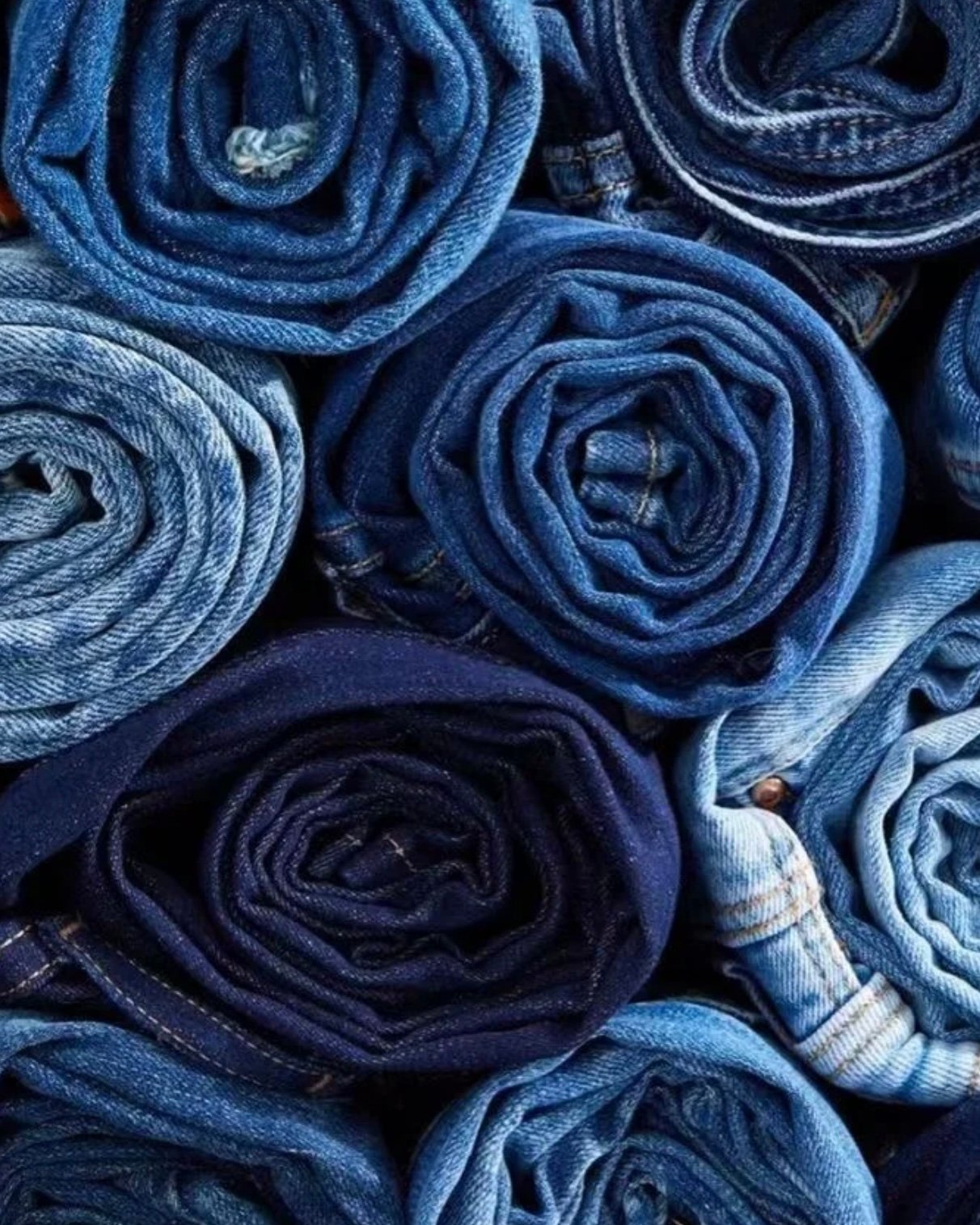
jeans
Causes of Yellowing
Yellowing stems from chemical, environmental, and usage factors:

Causes of Yellowing
Chemical Factors
- Incomplete Neutralization: Potassium permanganate (PP washing) or bleach residues, if not fully neutralized, oxidize over time, causing yellowing. Cotton Inc. research identifies indigo dye decomposition products like isatin and anthranilic acid as key culprits, with isatin migrating to lighter areas as yellow spots.
- Dye Decomposition: Indigo dye breaks down in oxidative conditions, forming yellow compounds.
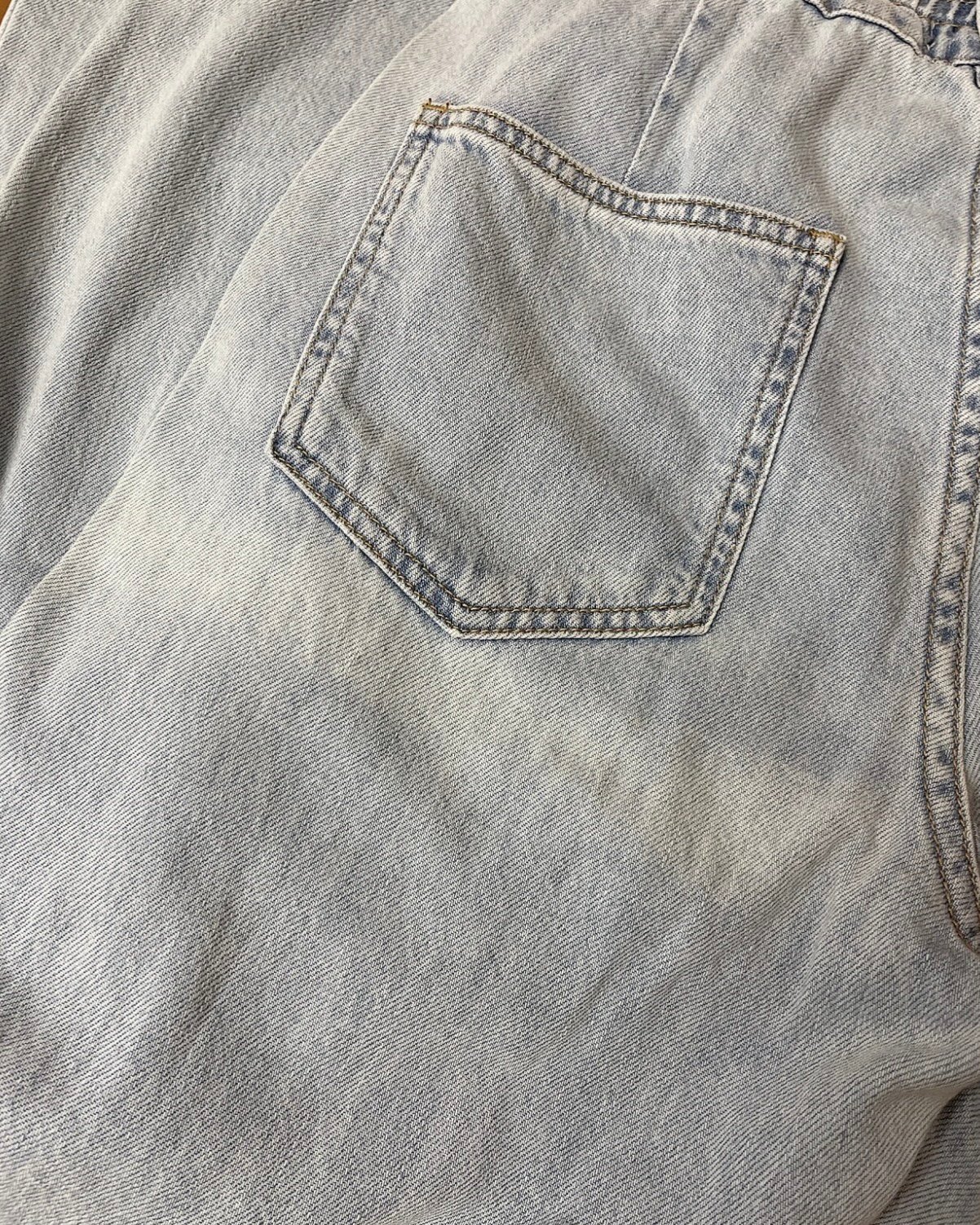
Chemical Factors
Environmental Factors
- Sunlight and UV Exposure: UV rays degrade dye molecules, accelerating yellowing. Per ISO 105-B02, fabrics below a Blue Wool Scale rating of 6 show significant yellowing after 40–80 hours of simulated sunlight (weeks of outdoor wear).
- Air Pollutants: Nitrogen oxides (NOx) react with fabric residues (e.g., BHT antioxidants), triggering “phenolic yellowing” during storage or display.
- Humidity: High humidity forms a water film on fabric, enhancing ozone and pollutant absorption, worsening yellowing.
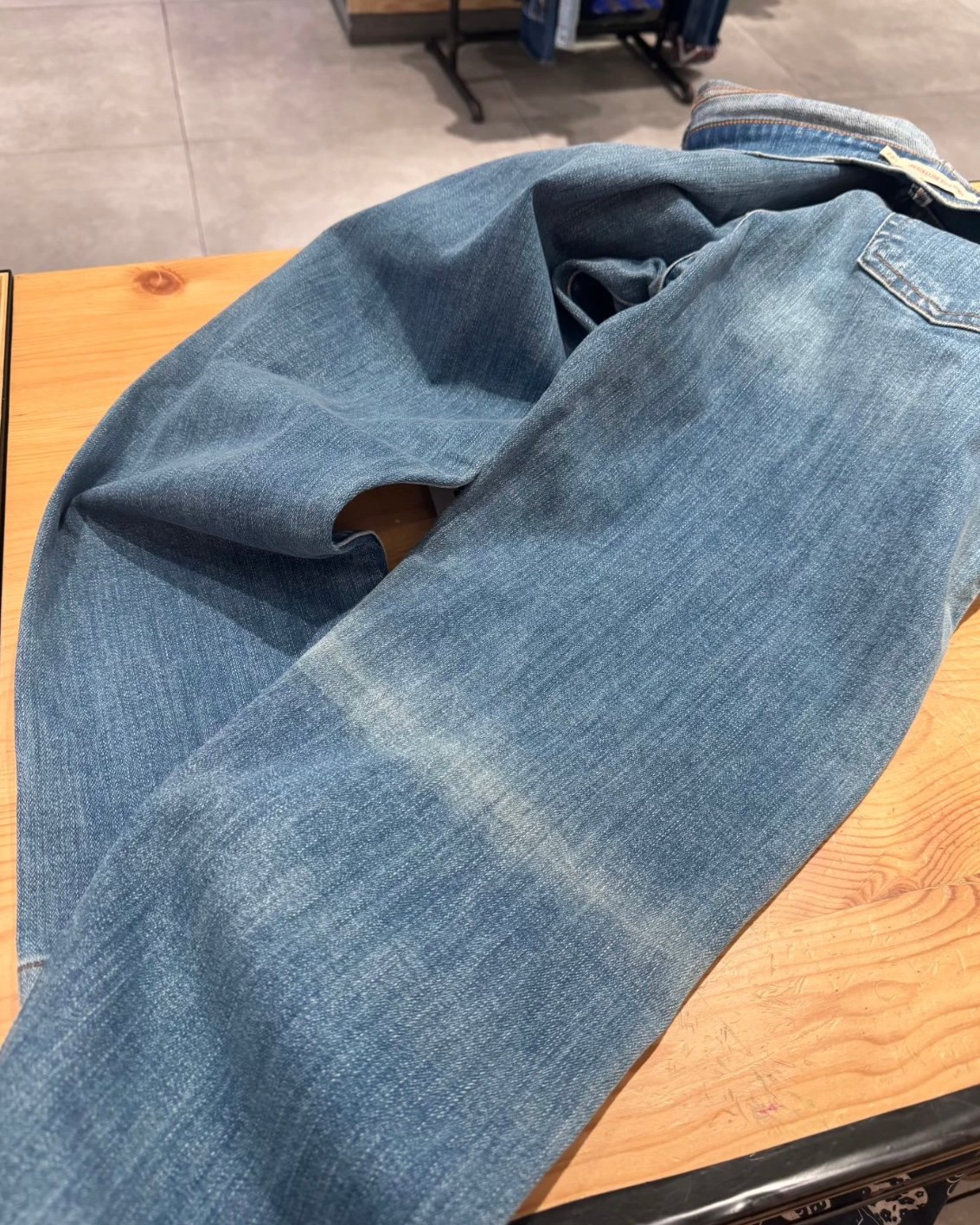
Environmental Factors
Usage Factors
- Sweat and Body Oils: Enzymatic and oxidative reactions from sweat and oils, especially at the waist or crotch, increase the b* yellow coordinate (Δb* ≥ 2 signals yellowing).
- Improper Washing: Hot water or harsh detergents hasten dye loss, exposing cotton’s natural yellow hue. Hard water minerals (calcium, magnesium) can also deposit yellow residues.
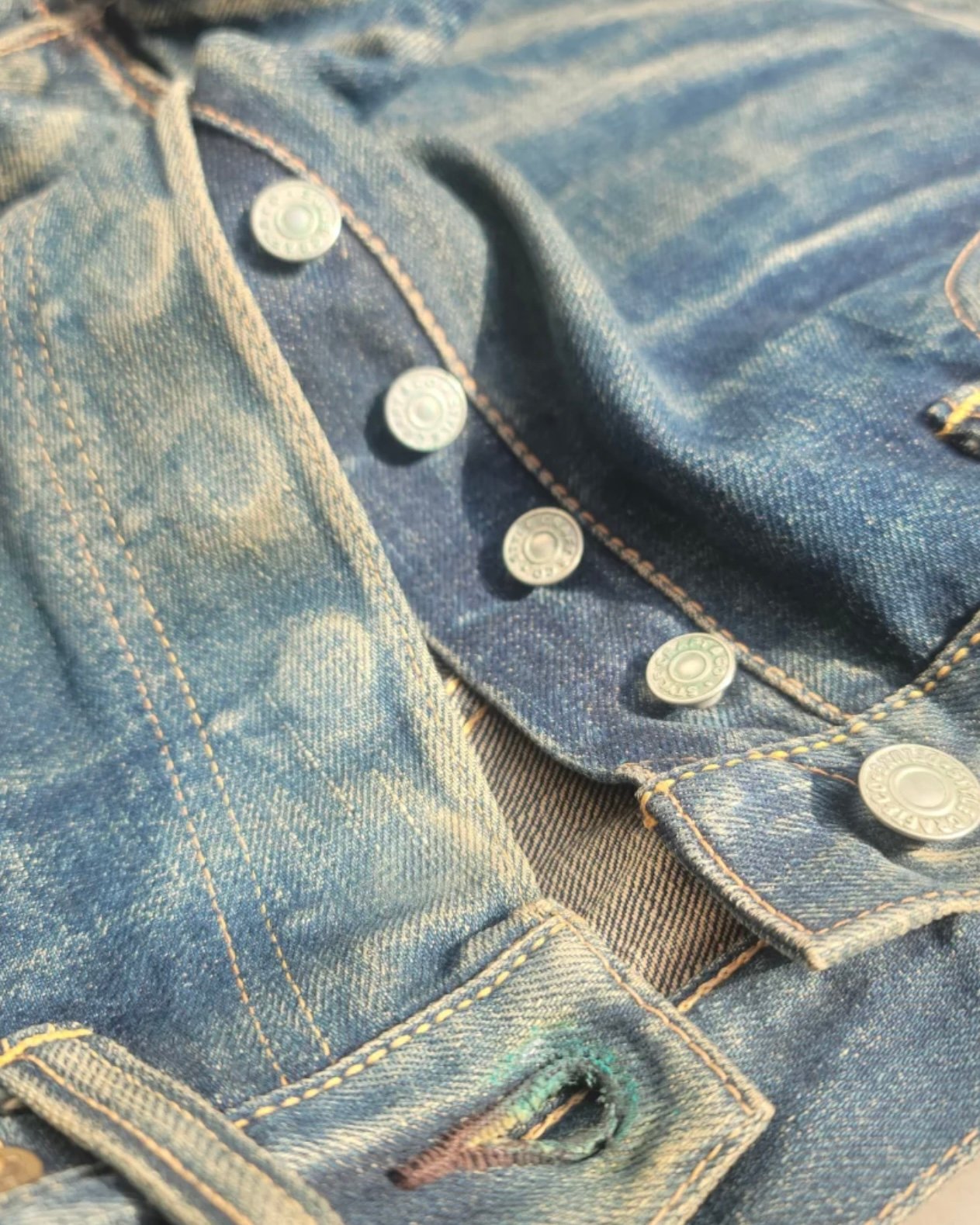
Usage Factors
Quality Issues Beyond Yellowing
Washing can cause additional issues:
- Shrinkage: Hot water or high-heat drying shrinks denim.
- Fading: Uneven dye stripping creates inconsistency.
- Shape Loss: Elastic denim with spandex deforms under improper care.
- Stains/Spots: Detergent or softener residues leave marks, as noted in consumer forums like Reddit.
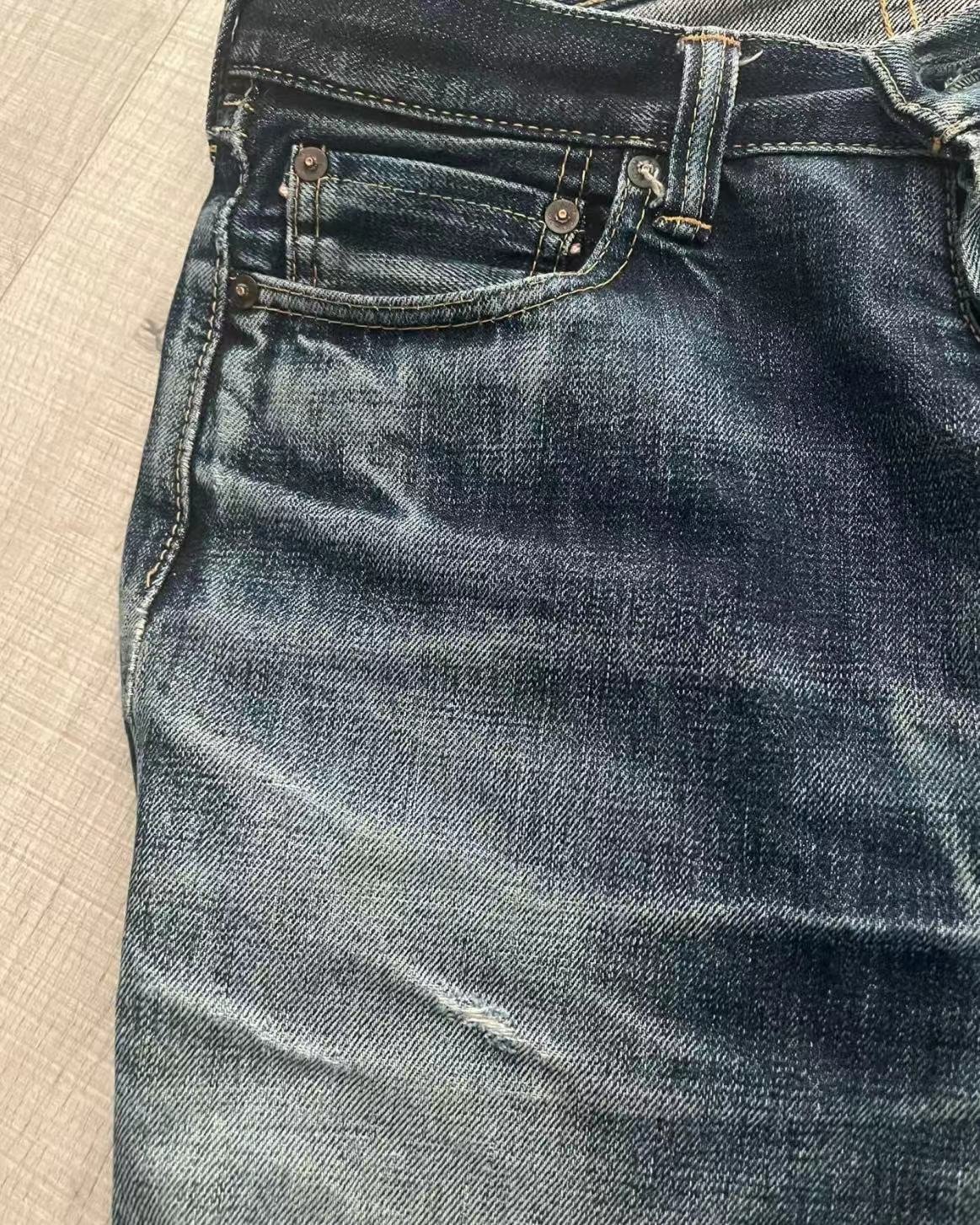
Preventive Measures for Manufacturers
Manufacturers can act across production, storage, and consumer guidance:
Production Process Adjustments
- Thorough Rinsing: Post-stone washing, remove dye decomposition products (e.g., isatin). Cotton Inc. validates this as essential.
- Neutral Enzymes: Use neutral enzymes instead of acidic ones to limit white yarn contamination, enhanced by anti-soiling agents.
- Complete Neutralization: Post-bleaching, eliminate residues with extended neutralization or higher agent concentrations (e.g., H₂O₂ then Na₂S₂O₅).
- Anti-Yellowing Finishes: Apply protective treatments to block ozone and pollutants.
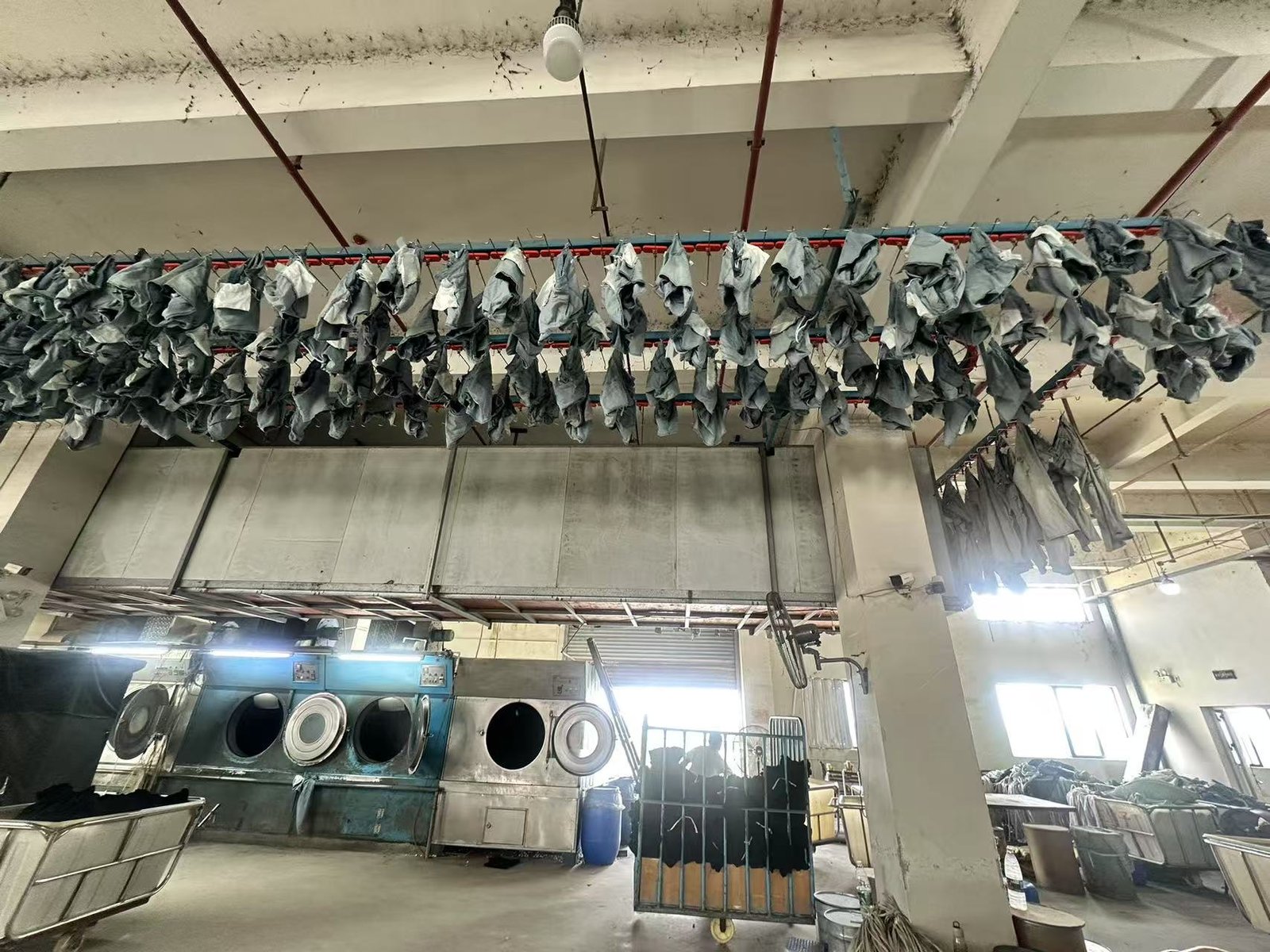
Storage and Handling
- Cool, Dry, Dark Conditions: Maintain 45–60% humidity; use breathable cotton bags.
- Ventilation: Reduce pollutant concentration (e.g., NOx) in storage areas.
- UV Protection: Use UV-protective sprays or covers during display.
Consumer Guidance
- Washing: Recommend cold water (≤85°F/29°C) with mild, color-safe detergents; minimize frequency.
- Drying: Suggest shade air-drying to avoid UV and heat damage.
- Stain Care: Advise against bleach/softeners, offering alternatives like alcohol for ink or peroxide for wine.
Summary of Preventive Measures
| Measure | Purpose |
|---|---|
| Thorough Rinsing | Remove dye decomposition products |
| Neutral Enzymes | Limit white yarn contamination |
| Complete Neutralization | Eliminate bleach residues |
| Anti-Yellowing Finishes | Block ozone and pollutants |
| Proper Storage Conditions | Prevent environmental yellowing |
| Consumer Education | Guide proper care to minimize yellowing risk |
Data and Experiments
Evidence supports these measures:
- Cotton Inc. Study: Confirms isatin and anthranilic acid as yellowing agents, removable by thorough rinsing.
- Neutralization Tests: Proper post-bleach neutralization cuts oxidation.
- Storage Tests: Denim at 80% humidity yellows 25% faster than in dry, dark conditions (GZ Henry Textile).
- Ozone/Light Test: 0.1 ppm ozone at 60°C for 72 hours, plus 8 hours UVA/B, measures b* changes (target Δb* ≤ 2).
- Sweat Simulation: Acidic sweat at 37°C for 7 days tracks dye loss (target Δb* ≤ 1.5).
Summary of Test Results
| Test | Conditions | Target |
|---|---|---|
| Ozone/Light Test | 0.1 ppm ozone at 60°C for 72 hours, plus 8 hours UVA/B | Δb* ≤ 2 |
| Sweat Simulation | Acidic sweat at 37°C for 7 days | Δb* ≤ 1.5 |
| Storage Test | 80% humidity vs. dry conditions | 25% faster yellowing at 80% humidity |
Chart Placeholder: Bar chart comparing yellowing rates at different humidity levels (e.g., 45% vs. 80% humidity).
Image Placeholder: Before-and-after photo of light-colored jeans showing yellowing effect.
Expert Insights
Industry voices reinforce these strategies:
- Anti-Ozone Softeners: Form a film to shield dye from ozone (Textile Learner).
- Maintenance: Clean, ventilated storage reduces pollutants.
- Consumer Tips: Levi’s suggests delaying initial washes for unique fading, echoing Japan’s “wabi-sabi” ethos.
Conclusion
By addressing yellowing’s root causes—chemical residues, environmental exposure, and usage habits—manufacturers can enhance quality. Key steps include rigorous production controls, optimal storage, and clear consumer instructions. Backed by science and expertise, these efforts ensure durable, pristine jeans, fostering satisfaction and brand strength in a competitive market.
Customization Services by LYDENIM
🎨 Want custom denim fabrics or unique custom denim garment? LYDENIM specializes in tailor-made solutions to meet your design and production needs.
🛍️ Explore & Get Inspired: Browse our fabric selections and discover design ideas on LYDenim.
🌐 Elastic Clothing: Check out our offerings on MyAlibaba. 📩 Contact Us: Reach out at malone@lydenim.com.
Create your denim masterpiece with LYDENIM—your trusted partner for stretch fabric and custom denim solutions.
